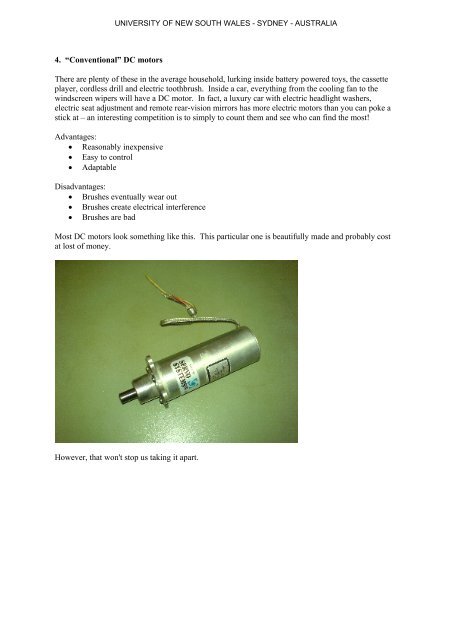How real electric motors work - School of Physics - The University of ...
How real electric motors work - School of Physics - The University of ...
How real electric motors work - School of Physics - The University of ...
Create successful ePaper yourself
Turn your PDF publications into a flip-book with our unique Google optimized e-Paper software.
UNIVERSITY OF NEW SOUTH WALES - SYDNEY - AUSTRALIA<br />
4. “Conventional” DC <strong>motors</strong><br />
<strong>The</strong>re are plenty <strong>of</strong> these in the average household, lurking inside battery powered toys, the cassette<br />
player, cordless drill and <strong>electric</strong> toothbrush. Inside a car, everything from the cooling fan to the<br />
windscreen wipers will have a DC motor. In fact, a luxury car with <strong>electric</strong> headlight washers,<br />
<strong>electric</strong> seat adjustment and remote rear-vision mirrors has more <strong>electric</strong> <strong>motors</strong> than you can poke a<br />
stick at – an interesting competition is to simply to count them and see who can find the most!<br />
Advantages:<br />
• Reasonably inexpensive<br />
• Easy to control<br />
• Adaptable<br />
Disadvantages:<br />
• Brushes eventually wear out<br />
• Brushes create <strong>electric</strong>al interference<br />
• Brushes are bad<br />
Most DC <strong>motors</strong> look something like this. This particular one is beautifully made and probably cost<br />
at lost <strong>of</strong> money.<br />
<strong>How</strong>ever, that won't stop us taking it apart.
















